

Matt Campbell
2025 Porsche 911 Carrera T review
5 Days Ago

News Editor
Genesis has completed its trio of X electric vehicle concepts with a shapely convertible with a folding hardtop and seating for four.
Revealed in Los Angeles ahead of the motor show there, the Genesis X Convertible concept shares its architecture and electric powertrain with the 2021 X Concept and 2022 X Speedium Concept.
Beyond that detail, Genesis hasn’t confirmed any other technical specifications of the X trio, nor has it indicated whether these presage production vehicles – though, notably, Genesis has trademarked the X Speedium name.
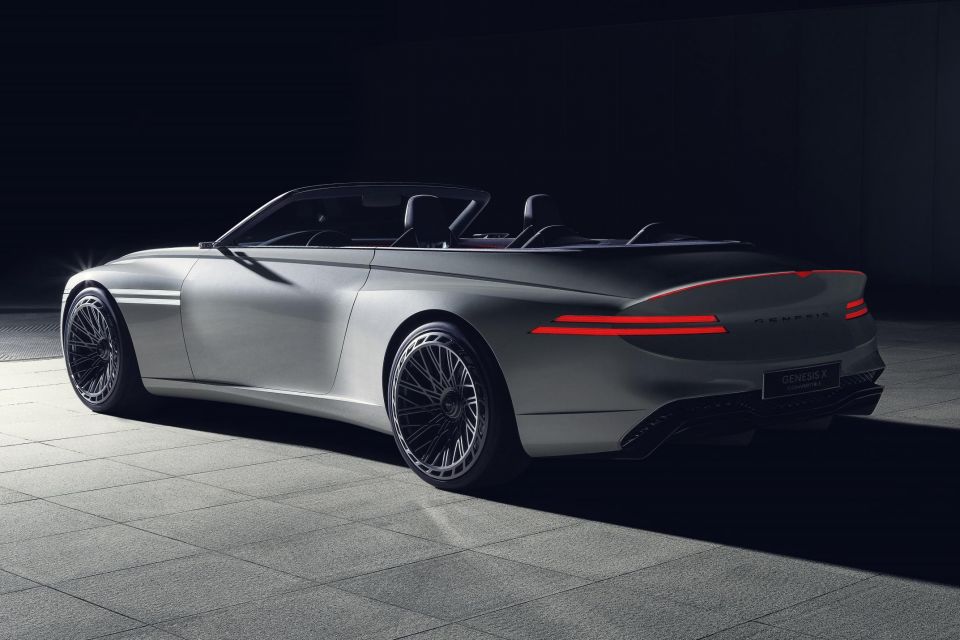
The concept features traditional grand tourer proportions: a long bonnet, a generous dash-to-axle ratio and a short front overhang.
Genesis’ “anti-wedge” Parabolic Line arches from the front fenders to the rear, while there are muscular blisters over the wheels to give the car some Coke bottle-like contours.
Notably, the X Convertible concept also features a relatively long rear deck for a more stately appearance. Genesis calls the rear treatment a “concave elliptical duck tail”, with the shape interrupted by a V-shape indentation that – like the lighting – hints at the crest and wings of the Genesis logo.
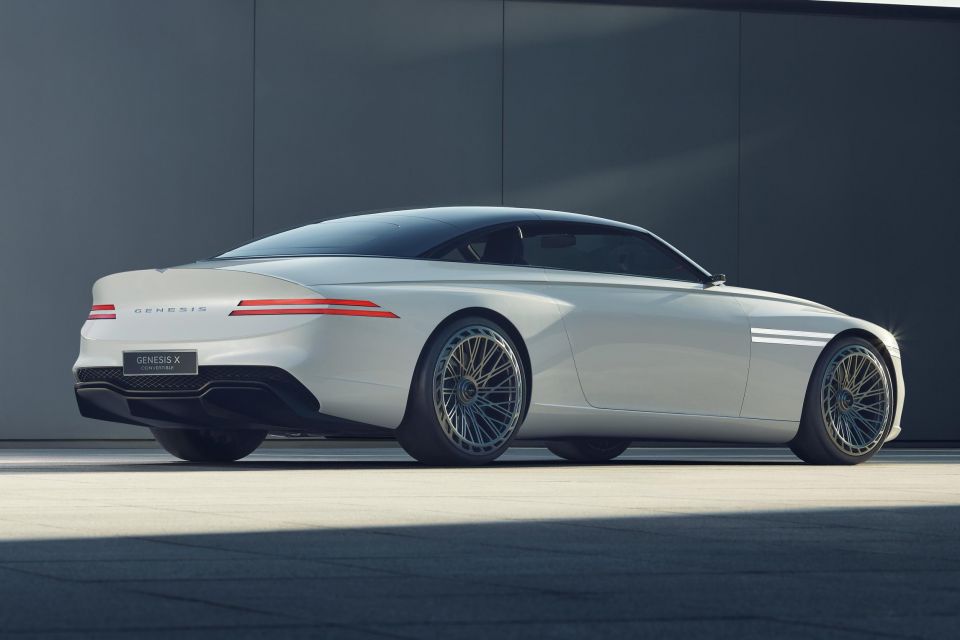
Rather unusually, the X Convertible concept features a folding hardtop roof with transparent moon roofs above the front occupants – somewhat reminiscent of the defunct Volkswagen Eos’ set-up.
The ranks of folding metal hardtop convertibles have thinned dramatically as automakers discontinue their drop-tops and the few that remain switch to soft-tops.
Like the X Speedium, the X Convertible wears a new version of Genesis crest grille – or, rather, grille area.
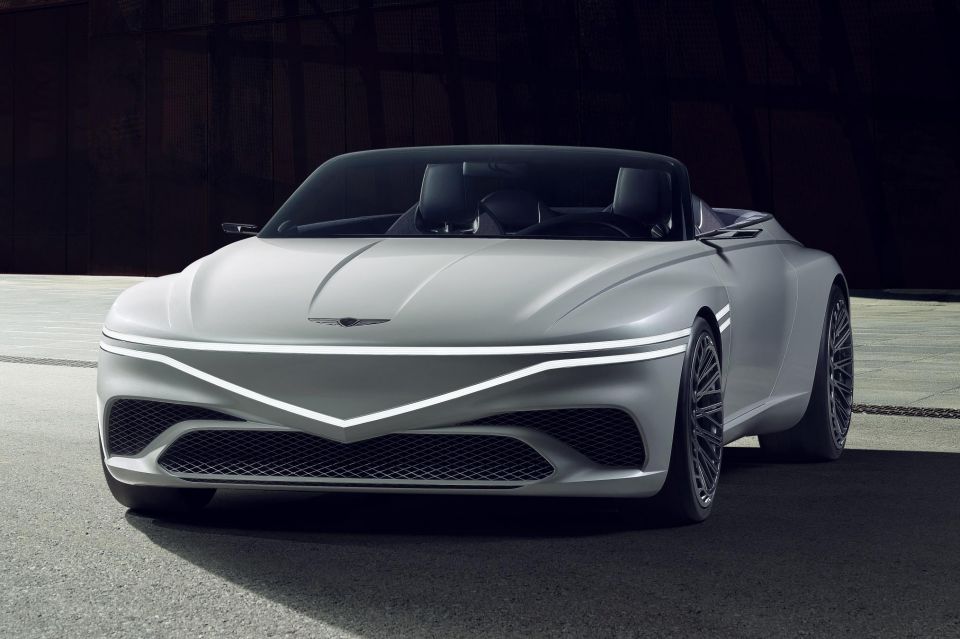
Instead of a simulated but closed-off grille, as can be found on the X Concept and production Genesis EVs like the Electrified G80, the X Speedium and X Convertible feature the illuminated outline of the brand’s crest grille.
Cooling for the powertrain and batteries is achieved through the use of openings in the front bumper.
The grille outline connects with Genesis’ signature bi-level headlights, which align with bi-level lights on both the side and at the rear.

Another Genesis signature – its so-called G-Matrix pattern – can be found on the concave aero dish section of the wheels. The spacers of this dish are designed to extract heat from the brakes.
The interior closely resembles the previously revealed coupe concepts, with a wraparound instrument panel – featuring a portrait-oriented touchscreen – that flows into the raised centre console for a driver-focused look.
A high-performance sound system developed by sound master Guk-il Yu also features in the concept.
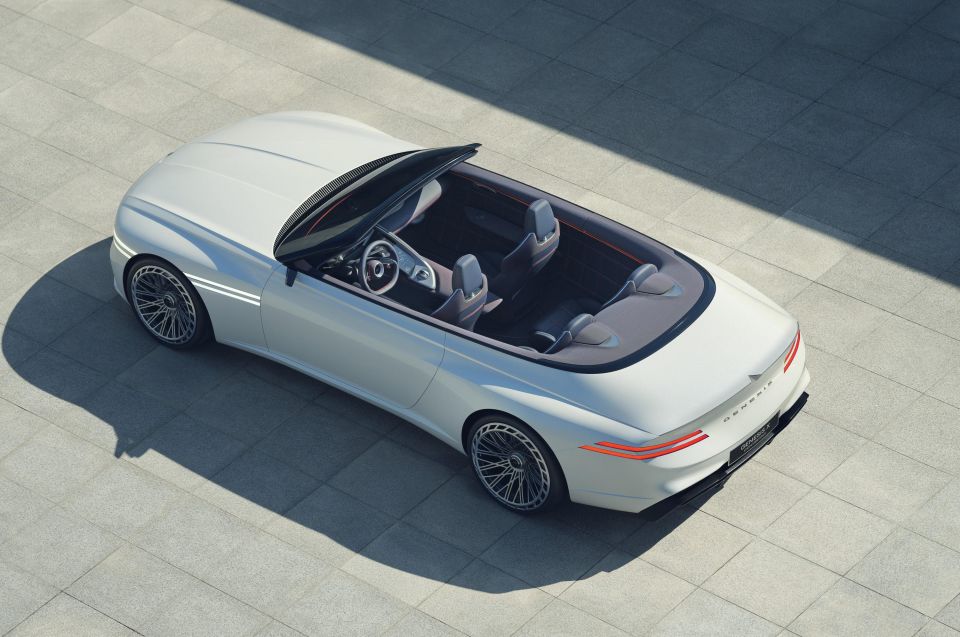
The X Convertible Concept interior differs from the coupe concepts with its unique Giwa Navy and Dancheong Orange shades, inspired by traditional Korean roof architecture – Giwa is a type of roof tile used in Korea, while the orange is inspired by the traditional decorative colourings on traditional wooden buildings.
A textured, woven pad graphic made of recyclable wool fabric wraps around the cabin, contrasting with the smooth leather seating surfaces.
The green/orange colourway contrasts with the concept’s Crane White pearlescent exterior, which pays homage to the white crane, a bird said to represent nobility and sanctity in Korea.
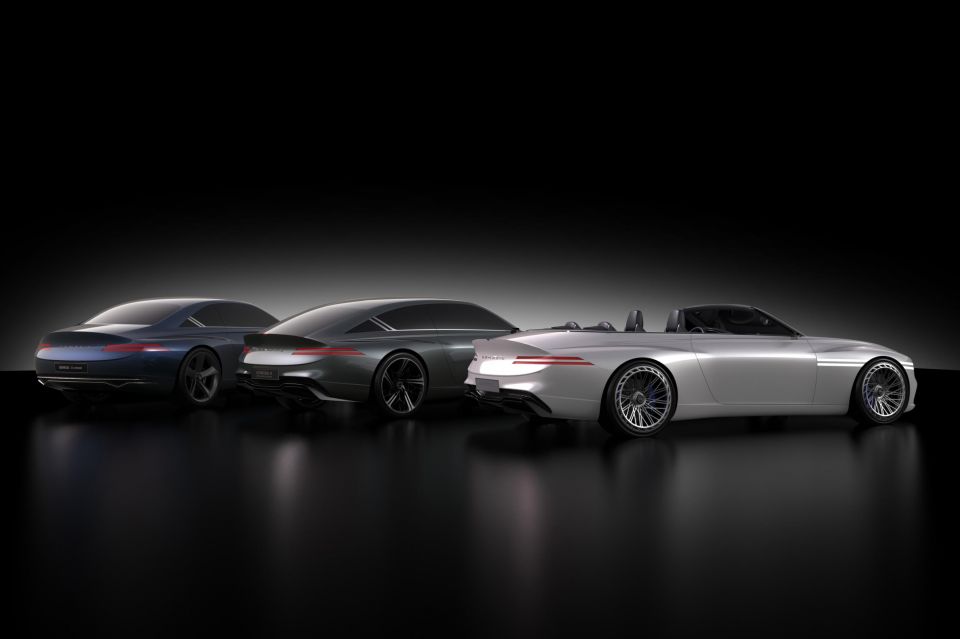
“Genesis started life by producing sedans mainly targeting business users. While creating a new, differentiated design DNA, we gradually increased the emotional appeal by applying this DNA to the SUV typology,” said chief creative officer Luc Donckerwolke.
“Now, electric powertrains have given us the perfect scenario in which to enjoy nature, and propelled the brand to create vehicles with even greater emotional resonance.”
Genesis has now revealed two different X-branded coupe concepts – one a notchback, one a fastback – plus this latest convertible.

However, the Korean luxury brand has never sold a coupe or convertible before.
There was a Genesis Coupe produced from 2008 to 2016, but this predated the establishment of Genesis as a separate brand in the Hyundai Motor Group.
Related to the first-generation Hyundai Genesis sedan not sold here, the Hyundai Genesis Coupe wasn’t positioned as a luxury model like its four-door counterpart. Available with either V6 or turbocharged four-cylinder engines, it was more of a rival to the likes of the Mitsubishi Eclipse and non-V8 Ford Mustang and Chevrolet Camaro coupes.
Where expert car reviews meet expert car buying – CarExpert gives you trusted advice, personalised service and real savings on your next new car.
William Stopford is an automotive journalist based in Brisbane, Australia. William is a Business/Journalism graduate from the Queensland University of Technology who loves to travel, briefly lived in the US, and has a particular interest in the American car industry.


Matt Campbell
5 Days Ago


James Wong
4 Days Ago


Max Davies
3 Days Ago


Josh Nevett
2 Days Ago


Josh Nevett
1 Day Ago
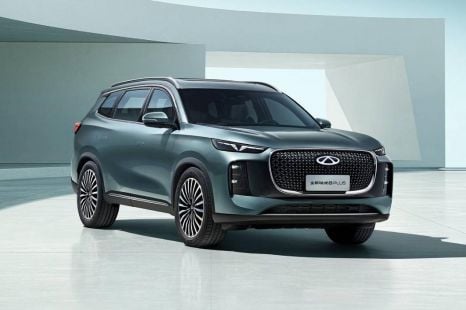

William Stopford
10 Hours Ago